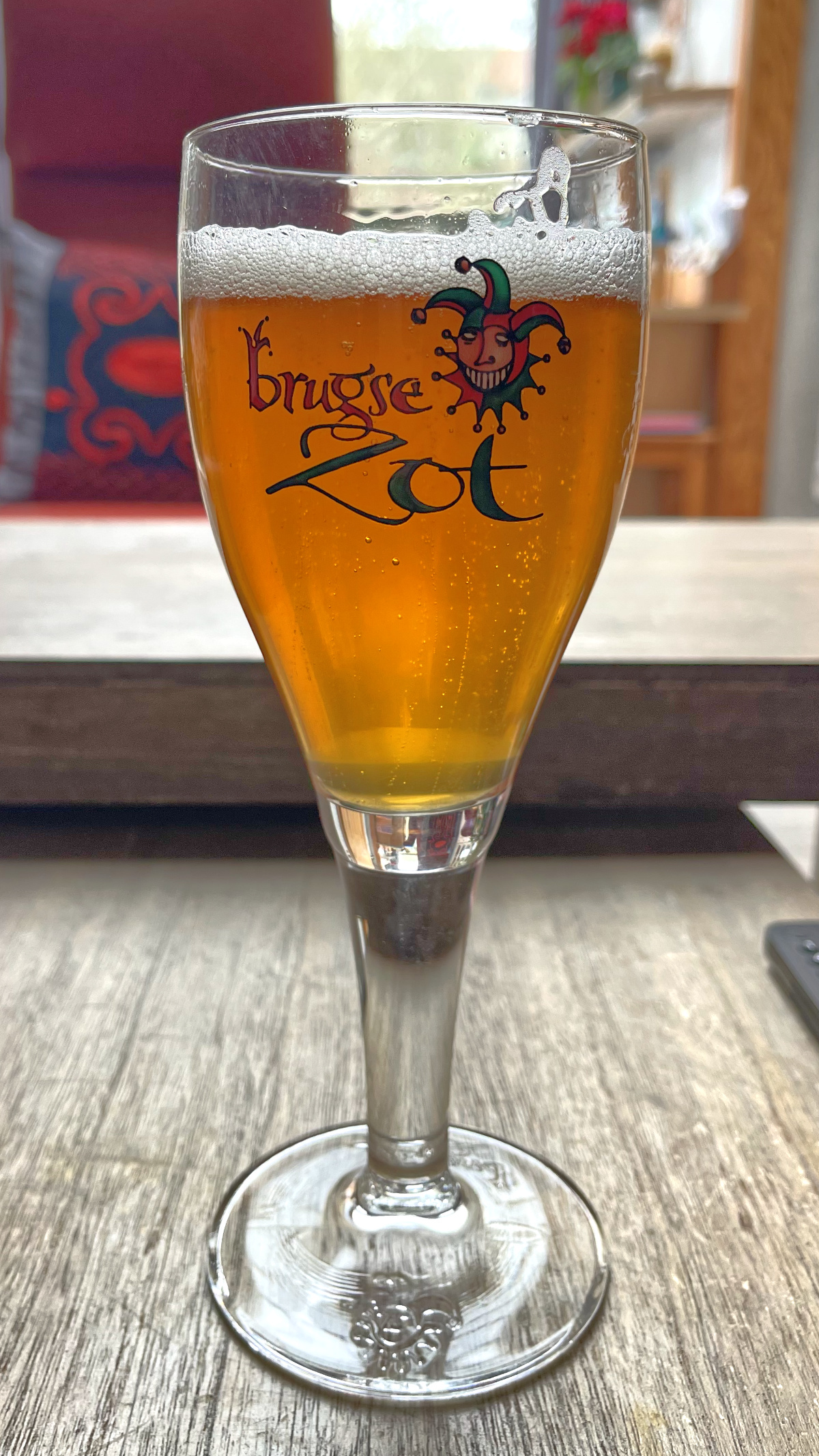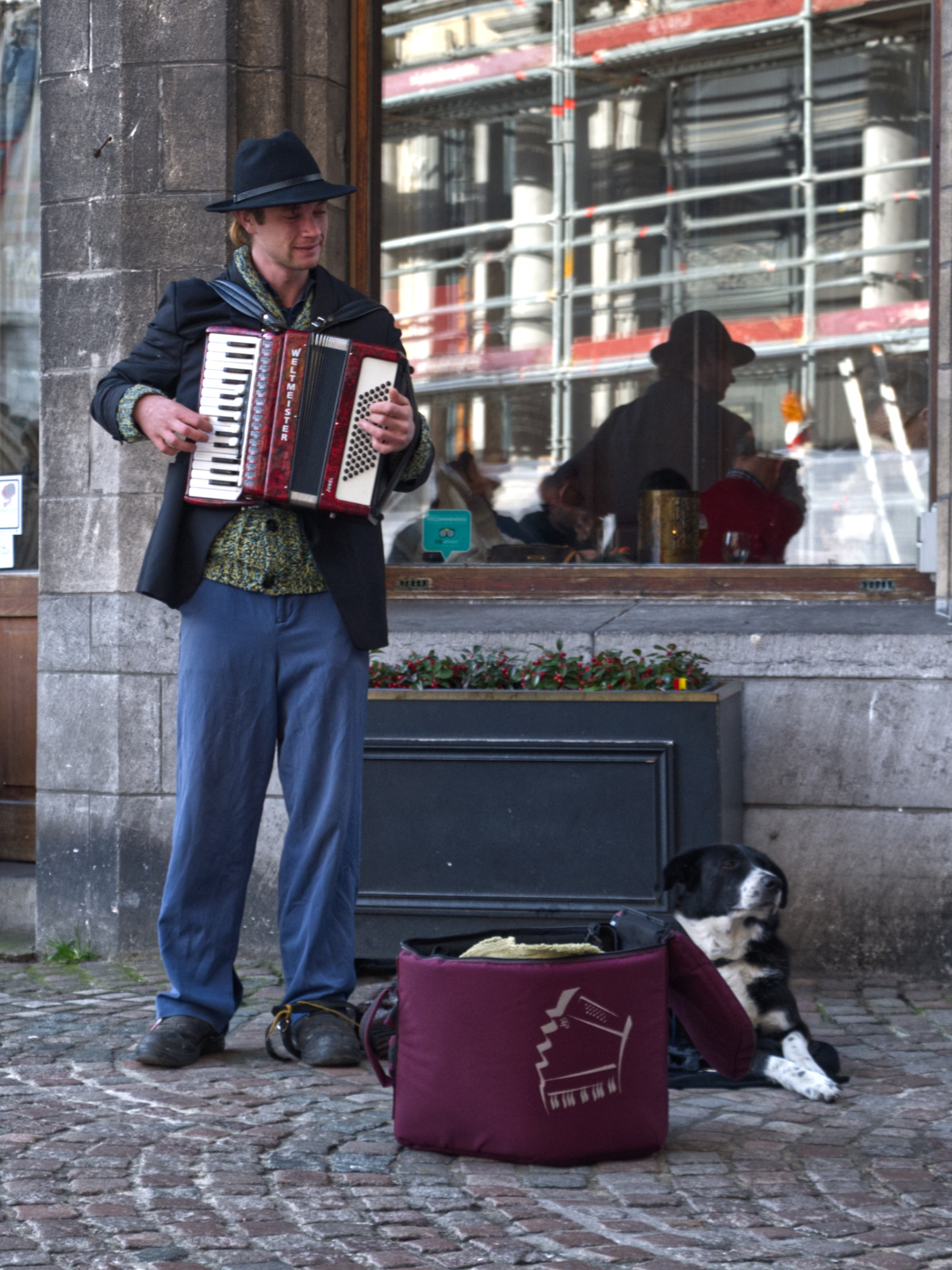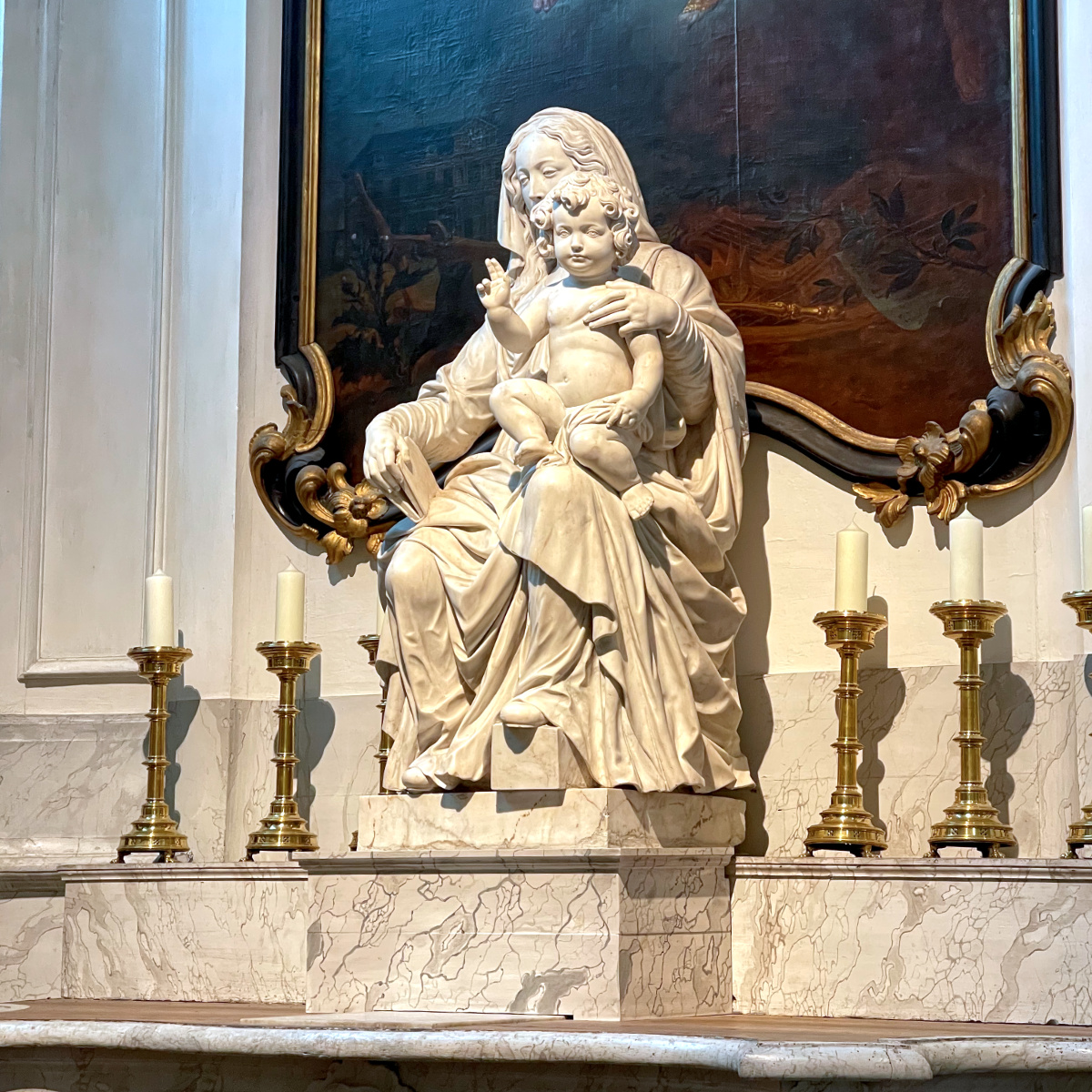"A history without a country," explained my tour-guide as we floated down the river Lys. Being invaded, split into states, and marked as a territory constantly over its history, it's no wonder why many Belgians still ask themselves, what does it mean to be a Belgian?
Considered the Crossroads of Europe, the Belgian capital is an hour flight from London, an hour flight from Paris, an hour-and-a-half flight from Berlin, and a two-hour drive from The Hague. All of Belgiums neighbors, with the exception of England, have successfully occupied Belgium.
These complicated relationships have lead to four regions: Flanders, Brussels, French Wallonia, and German-speaking Wallonia. Most everyone I met spoke at least three languages (Dutch, French, and English) — an amazing feat to an American like me just trying to learn Spanish.
As you can imagine, this chaotic history sparked a diverse exchange of thought, language, and culture, all leading to truly compelling travel experiences. For my trip, I visited two influential medieval cities in the Flemish region: Ghent and Bruges.

Gothic stone churches, cozy bookstores, elaborate stained glass, dramatic rain, and the best espresso I've ever had, Ghent is the Dark Academia aesthetic. Strategically sat at the confluence of the rivers Lys and Scheldt, much of Ghent has retained its original medieval architecture. I guarantee that your first walk across St. Michael's Bridge into the city's center will take you back in time to its ancient roots. But, if you're really lucky, you might run into friendly locals who are coming back from a rave that ended at 7 that morning.
 (Left to right: St. Bavo's Cathedral, The Belfry, St. Nicholas' Church, and The Old Post Office Clock Tower)
(Left to right: St. Bavo's Cathedral, The Belfry, St. Nicholas' Church, and The Old Post Office Clock Tower)
There's three iconic structures that make up the city's skyline: St. Bavo's Cathedral, The Belfry, and St. Nicholas' Church — all existing before the end of the 1300s. A great view of the medieval skyline can be had at the Gravensteen, or the Castle of the Counts.
Speaking of which, the 12th century Gravensteen used to be the home of the Counts of Flanders until the mid-1300s. Secured by a moat, Count Philip of Alsace designed the castle to protect the area from invading Vikings as well as illustrate his authority to his citizens. With such motivations, it's no shock that numerous bizarre tortures took place in the various rooms I explored. While a bit macabre, there's a well-done audio tour that guides you through the entire castle which really makes the gruesome history and the castle's importance come to life.

Despite no longer being home to political figures, the castle still occasionally had public sway in the modern era. In 1949, 138 students from the University of Ghent captured the Gravensteen to protest the new increased taxes on beer. Fiercely defending the castle walls by throwing rotten fruit on the police, their eventual demise were the firefighters who blew them off the walls with water hoses and invaded with ladders. While the students all received hall-passes because of the public's support, the beer tax was, unfortunately, not removed.

Now, as you may have gathered, beer is a pretty big deal in Belgium, and I was certainly curious if this was for good reason. To find out, I headed to one of the most uniquely set restaurants in Ghent.
't Oud Clooster (The Old Cloister) is a Black Nun convent turned cozy restaurant. Sitting at the bar, surrounded by dark wood and Christian iconography, I asked the barkeep which was his favorite local beer. He pointed at the more crisp and fruit-forward Gentse Tripel.

All I can say is that me trying to describe it to you would be an injustice. But, I can confirm that Belgian beer is world-renowned for a very good reason.
Along with my Tripel and with the help of my server's menu-translation, I ordered the duck breast with port sauce, roasted carrots, and potato-filled croquettes. For dessert, I selected the chocolate mousse, layered with dark and milk chocolate and topped with whipped cream and chocolate shavings. I could not have asked for a better meal and I highly recommend 't Oud Clooster — especially on a rainy evening.
Now I'd be remiss to not mention the other two famous Belgian delicacies — waffles and frites. As advised by my AirBnb hostess, I got my first Belgian waffle from Salon de Gaufre, a little restaurant between two chocolatiers in the Groentenmarkt. Let me tell you, my hostess did not steer me wrong. This waffle was truly cooked to perfection: crispy and fluffy, but not chewy. This was the best waffle I had from the two cities I visited.

(I think about this waffle daily.)
As for the frites, the place recommended to me was Frituur Bij Filip, a little shop in the medieval meat market hall. Unfortunately, Filip was closed during my time in Ghent (not sure why) so I found another Frituur called Frituur Frans Hooiaard. I ordered the beef and stoofvlees sauce (a famous Belgian stew). To be honest, it was…OK. Nothing too notable, so I'm very curious how Filip compares. If you've been to Filip, please let me know your thoughts!

Now earlier I mentioned that I had the best espresso I've ever had in Ghent (yes, admittedly I haven't been to Italy yet. I may have to eat my words one day, but for now I stubbornly hold my ground). This delicious espresso was from a little coffee house tucked away called Mokabon.
It was so good that I brought some ground beans home. I will warn you though, while the aroma is wonderful, it is also lingers. Every room that had my 250g coffee bag in it smelled like the coffee after twenty minutes. This included my international flight back home. Nonetheless, it was very much worth it.

Before I left to my next city, I needed to explore one last culinary excursion recommended by a colleague who used to live in Ghent. There's a tavern called Dulle Griet where they are known to sell beer by the kwak — or a giant funnel shaped beer glass with a knob at the end. Now, a kwak can't stand on it's own without an accompanying holder, so why would anyone do this to themselves?

Well, as per the traditional story, there was a tavern owner named Pauwel Kwak who lived during Napoleon's control of the country — a time where a primary method of transportation was horse and carriage. There was a law which stated that coachmen needed to stay with the carriage and luggage at all times. For coachmen, this meant that joining their passengers at their tavern pit-stops would be illegal…and much less profitable for taverns. So, Kwak designed a glass that could be holstered to the side of the carriage. While the coachmen couldn't drink in the tavern, they could be served at their carriage.
While you don't need to be guarding a carriage to drink from a kwak glass today, the tavern does require something more than a few euros — they need your shoe too. Over the years, patrons have stolen many of the novel kwak glasses. To ensure that you aren't one of those patrons, you must temporarily give up one of your shoes to be placed in a net, hung from the ceiling. Both the beer and entire experience is totally worth your time (and you will get your shoe back if you ask nicely).
 (The famous Quay of the Rosary)
(The famous Quay of the Rosary)
While a little on the nose, I think it's still fair to say that one of the best ways to get a snapshot of Belgium's inimitable atmosphere is by reading Tintin. As you may know, Tintin is the comic book reporter with an orange quiff and small white dog that goes on adventures. The fusion of whimsical mysteries, exotic locales, and the historical lens in which the stories are told can help you appreciate some wonderful aspects of Belgian culture and elusive identity. If you do a dive into Tintin and King Ottokar's Scepter, you'll know exactly what I mean.
Anyway, back to beer.
Upon arriving in Bruges, I was greeted with a crisp and delicious pint by my most welcoming AirBnb host. As you may have expected by now, this was no ordinary beer. In fact, this was the famous Brugse Zot, or the Belgian Fool.

According to lore, Holy Roman Emperor Maximillian was visiting Bruges for the annual Procession of the Holy Blood. Being a time of joy, the mayor of Bruges thought that this would be a good time to ask for an important favor. So, the mayor made his case for building a brand new hospital, specifically a hospital for the mentally ill. Unexpectedly, the emperor laughed at the mayor's proposal and countered with “You don't need a new building. Just build a wall around the city, and there you have your mental hospital.” Ever since, the people of Bruges were known as “fools” and the Brugse Zot commemorates this royal honor.
While I certainly enjoyed the beer, I definitely needed to walk it off, and there's just a place that'll give you a workout. The Belfry overlooks the market square and provides a magnificent survey of Bruges. However, you need to earn these views by climbing 366 shallow, narrow, and slippery steps to the top. Don't worry though, there are a couple rest points in your journey where you can learn more about the ancient bell system and the impact that the Belfry had on medieval Bruges.
 (Church of Our Lady viewed from atop the Belfry)
(Church of Our Lady viewed from atop the Belfry)
There's several other museums and monuments near the Belfry that you can tour, but I suggest spending a few hours just wandering the streets that run along the canals. You can take in the fresh smells of sweet waffles and chocolate, and listen to cheery street performers.

This is how I ran into the Church of Our Lady. On the outside, the church just seems like another old, yet stunning, church with a quaint bridge and small garden. A good photo opportunity for sure. However, stepping inside reveals a world-famous masterpiece, once coveted and plundered by the Nazis in World War II, and daringly reclaimed by the Monuments Men.

If you haven't seen the movie yet (which I recommend that you do), the Monuments Men were a group of art historians, restorers, and curators who formed a special military unit in response to the Nazi's plundering of art. Their mission was to return these stolen artistic and cultural treasures to their rightful owners. At this point in the war, the Nazis were on the retreat and this meant that they started getting desperate. As ordered by Hitler, if Germany fell, this massive collection of art was to be destroyed. One such masterpiece at risk was Michelangelo's marble Madonna and Child which was smuggled out of the church using a mattress. It was later recovered by the Monuments Men who unearthed it in a secret salt mine it had been stashed in.
 (Madonna being discovered by the Monuments Men in the Altaussee salt mine)
(Madonna being discovered by the Monuments Men in the Altaussee salt mine)
As you stroll through the city, you also can’t help but notice all of the chocolate shops, each with their own personality on display. Now, it’s certainly easy to pass off Belgian chocolate as a tourist trap — I mean how much better could their chocolate be? After all, cocoa can only grow in a select few places. However, I think this comparative exercise misses the point. Although Belgian pure dark chocolate is delicious, I think you'll find that it's the quality of the experimentation and presentation that keep Belgian chocolate so world renowned. To me, one of the best examples of this is The Chocolate Line — a Michelin-ranked, family-owned chocolatier. From chocolates the shape of Landrovers that literally “pop” in your mouth, to interesting flavor combinations like peas and mint, there is something unique for everyone to enjoy. Here's the varieties that I savored:
 (Photos from TheChocolateLine.be)
(Photos from TheChocolateLine.be)
Starting from left to right in the selection above:
Fiona: A hazelnut and puffed rice praline with honey and elderflower. This one was my favorite.
Yuzation: Yuzu from Antwerp combined with Mexican dark chocolate.
Mole Chocolate: Vietnamese dark chocolate with chipotle, keylime kosho, and all spice.
Peas and Mint: Mexican chocolate ganache with sourdough bread that has been infused with Moroccan Mint. The top is decorated with peas. Sounds weird, but having one will have you coming back for more.
Now, if there's one last experience I can leave you with, it'll have to be ending the day at Minnewaterpark. There's a quaint “castle” called the House of Della Faille that sits on the edge of the lake. Once a home for a Dutch noble family in the 19th century, it’s now a peaceful cafe. On my last day in Belgium, I got myself a coffee and sat down to watch the sun set behind the old Gunpowder Tower. While certainly a bit cloudy, the clouds just added to the drama of the scene: church bells ringing in the distance and the softening light highlighting the old tower and its reflection. Minnewaterpark was a good spot to reflect on the past week.

